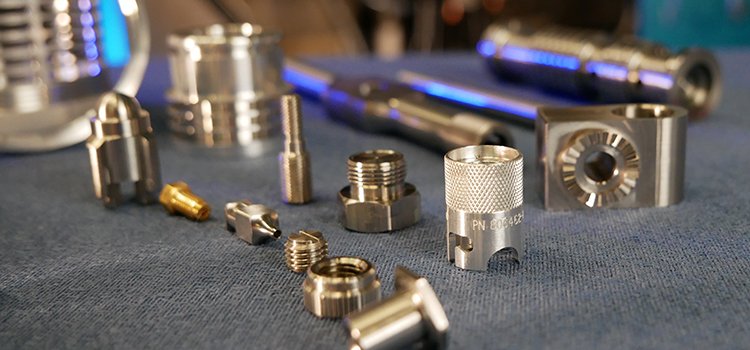Introduction to CNC Milling
CNC (Computer Numerical Control) milling is a manufacturing process, but different from the traditional process. CNC machines employ computers to run tools and cut raw materials in specific shapes and sizes. Soon after its launch, the technology became indispensable in modern manufacturing. It can cut materials with minimum human interference. Here, the computer plays the role of an operator. It records the specifications and runs the cutters to cut materials according to exact specifications. Industries that require complex parts with intricate geometries rely on CNC machining for parts.
How CNC Milling Works?
CNC milling machine works on a computer program that dictates the movement and speed of tools. The software records the specifications of the product to be carved out of raw materials. The software runs the tools keeping a tab over the cutting depth to ensure the specifications are met. It is the latest in manufacturing technology that requires little human intervention. A human operator is required only to make the necessary settings.
Steps to CNC Milling:
- Designing – A detailed 3D model is designed using a specific CAD (Computer-Aided Design) software. The software is downloaded in the CNC machine for designing purposes.
- Converting to CAM File – CAD is the designing software. The design created has to be translated into a machine readable code. The machine needs CAM (Computer-Aided Manufacturing) software to convert the CAD file into a readable design.
- Setting Up the Machine – The human operator makes the necessary settings such as selecting and installing the right tools. Also, the machine has to be checked before starting.
- Cutting the Part – Once the settings are made, the machine is sent into milling mode. The tools work according to the specifications entered in the software. The human operator monitors the machine from a safe distance.
- Quality Control – The parts and components are sent for quality check and surface treatments for delivery. It is where the products are filtered to allow only quality products to be delivered.
Types of CNC Milling Machines
- Vertical Milling Machine – It feature a fast-moving vertical cutting tool and used for precision cutting and drilling of metallic components and parts.
- Horizontal Milling Machine – The tool is horizontally positioned. It enhances the cutting efficiency of the tool and make it more suitable for chip evacuation.
- 5-Axis CNC Milling Machine – It is a multi-directional cutting tool used for creating complex parts with highly intricate designs such as engine parts.
- Turret Milling Machine – It features a stationary spindle set on a movable table that allows the spindle to work in different directions. It offer greater flexibility in machining.
- Bed Milling Machine – It comes with a fixed spindle on a moving table and suitable for working on off-dimensional and heavier workpieces.
Advantages of CNC Milling
- Precision and Accuracy – Designed to achieve tight tolerances, CNC milling ensures consistency of design and features in high-quality parts.
- Efficiency and Automation – Minimal human intervention reduces human errors to zero and increases production speed.
- Versatility – Compatible with all kinds of raw materials, including metals, plastics, composites, and ceramics.
- Complex Design Capability – Simplifies designing of custom parts with intricate designs that would be difficult with manual processes and tools.
- Scalability – Suitable for both prototyping and mass production.
- Reduced Material Waste – Can optimize workflow to minimize material wastage, save costs, and reduce environmental impact.
- Enhanced Safety – Automated process prevents direct human interaction with the machine, minimizing the risk of accidents.
Applications of CNC Milling
- Aerospace – Production of lightweight and high-strength components like fuselage, tail assembly, landing gear, and engine used in aircraft.
- Automotive – Producing engine components and parts, braking systems, powertrain components, exhaust systems, and structural parts for vehicles.
- Medical – Designing complex surgical instruments, surgical tables, implants, diagnostic instruments, implants, and prosthetics with high precision.
- Electronics – Consumer electronics relies on CNC milling for intricate circuit board components and housings for electronic devices.
- Defense and Military – CNC milling fabricates robust military-grade equipment and weaponry with high precision and accuracy.
- Industrial Machinery – CNC milling companies manufacture specific parts and components such as gears, shafts, bearings, axles, fasteners, seals, and other mechanical components for various engineering industries.
Future of CNC Milling
CNC milling continues to evolve with AI and machine learning technologies. The integration of smart sensors, real-time monitoring, and predictive maintenance have further improved the efficiency and precision of CNC milling. The next-generation machines will combine CNC milling with 3D printing to open new possibilities for rapid prototyping and custom designing of intricate parts.
Conclusion
The CNC milling process is crucial for the manufacturing industry. It ensures precision and accuracy in high-quality components. It is highly versatile and reliable for manufacturing critical machines, especially for the medical, aerospace, and consumer electronics. Also, the continuous evolvement of CNC milling technology opens more possibilities for designing complex and customized parts.


